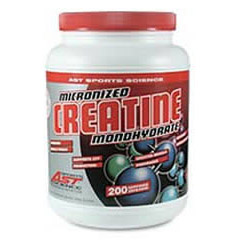 Research Breakthrough! Creatine Reduces Miostatin!
Research Breakthrough! Creatine Reduces Miostatin!
Holy Shit! Is there anything creatine can’t do?? What’s next… creatine grows back hair and improves sex?! Ever since those pictures of the myostatin-deficient mice and the famous Belgium Blue Cattle were displayed a few years ago, bodybuilders have been looking for ways to reduce myostatin levels. Bodybuilders have been waiting patiently for researchers to produce a myostatin-reducing FDA-approved drug, but until that time, we are going to wait. Now, based on groundbreaking new research, the answer you are waiting for to reduce myostatin is sitting on most supplement store counters… just look under CREATINE (Cr).
Creatine Turns on IGF-1 Signaling in Muscle
It has been reported that short-term Cr intake increases fat-free mass in strength-trained athletes.1,2 A couple of studies have been published, which are turning new and novel mechanisms for Cr increases in muscle mass.
One of the ways Cr may be increasing muscle hypertrophy is through increasing IGF-1 mRNA. Among the known growth factors, IGF-1 is known to stimulate satellite cell activity, as well as protein synthesis, as well as increasing muscle hypertrophy. In fact, IGF-1 is such a potent stimulator of muscle hypertrophy that infusion of local IGF-1 directly to skeletal muscles has shown increases in muscle mass.
It was earlier reported that when muscle cells were cultured in test tubes, the addition of Cr resulted in improved cell differentiation and increased expression of IGF-1 mRNA.3 So what about human studies? Human studies have also shown that Cr supplementation increases mRNA IGF-1 activity as well.
In a double-blind cross-over design, muscle biopsies were taken from the vastus lateralis of resistance-trained men at rest, and three and 24 hours post-exercise, who had taken Cr or a protein/carbohydrate drink for five days. After Cr supplementation, resting muscle expressed more mRNA for IGF-1 (+30 percent). Exercise also caused an increase by three hours post-exercise in IGF-1 (+24 percent) and by 24 hours post-exercise in IGF-1 (+29 percent), but this effect was not increased by Cr supplementation.
It’s interesting that in the study, Cr increased mRNA IGF-1 activity without exercise, but taking Cr and exercise did not augment the response. The researchers concluded that the increase in lean body mass often reported after Cr supplementation could be mediated by signaling pathway(s) involving muscle mRNA IGF-1.4
In a recent issue of the Journal of Physiology a new study was published that reported that Cr can also increase satellite cell activity. In that study, in a double-blind design, 32 healthy male subjects were assigned to strength training for 16 weeks, while receiving either Cr, protein, or a placebo. Muscle biopsies were obtained at weeks zero, four, eight (week eight not CON) and 16 of resistance-training (three days per week).
Results of the study concluded that all training regimens were found to increase the proportion of satellite cells, but significantly greater enhancements were observed with Cr supplementation at week four and at week eight. Furthermore, Cr supplementation resulted in an increased number of myonuclei per fiber and increases of 14-17 percent in muscle fiber area at weeks four, eight and 16. In contrast, the protein drink group showed increase in muscle fiber area only in the later (16 weeks, +8 percent).
This study is pretty important to bodybuilders in that it’s the first study that shows that Cr supplementation, in combination with strength training, amplifies the training-induced increase in satellite cell number and myonuclei concentration in human skeletal muscle fibers, thereby allowing an enhanced muscle fiber growth in response to strength training. One of the other muscle-enhancing genes for muscle hypertrophy is reducing myostatin.
Creatine Also Reduces Myostatin
Big news reported from researchers in Iran. In addition to creatine increasing muscle IGF-1, they found that creatine also reduces myostatin! Interestingly, it has been reported that myostatin expression decreased in creatine-supplemented pigs.5 I am not no pig!! This is MD— bring on the hardcore lifters research!!
This month in the Journal of Molecular and Cellular Endocrinology, researchers examined myostatin and a protein called GASP-1. The protein GASP-1 binds directly to both mature myostatin and its pro-peptide; it is also capable of blocking myostatin. It has been shown to be expressed in human skeletal muscle, circulates in human blood, and inhibits myostatin activity. So, GASP-1 may have a critical role in controlling myostatin function in skeletal muscle cell and serum.
In a double-blind design, 27 healthy male subjects were assigned to control (CON), resistance training and placebo (RT and PL) and resistance training and creatine supplementation (RT and CR) groups. The subjects received creatine monohydrate capsules at a dose 0.3 grams per kg per day (divided into three equal doses) for the first week (loading period) and 0.05 grams per kg per day (once daily) for the remaining seven weeks.
The protocol consisted of three days per week of training for eight weeks, each session including three sets of 8-10 reps at 60-70 percent of 1 RM for whole-body exercise. Blood sampling, muscular strength testing and body composition analysis (full body DEXA) were performed at zero, fourth and eighth weeks. At the end of eight weeks, there were no significant differences between the groups with respect to total calorie, carbohydrate, protein, and fat intakes.
This is the first study to demonstrate that creatine supplementation added to a resistance training program amplifies the training-induced decrease in serum levels of myostatin, increasing the effects of exercise on muscle strength and mass.6 In addition, it was shown that eight weeks of resistance training resulted in significant elevations in serum GASP-1. They observed an increase in GASP-1 in both training groups, although no significant changes were observed at the initial phase of the training (at week four).
Thus, the key point of this study is that creatine takes a few weeks to see changes at the molecular level, as noted in this study, which was four weeks. Furthermore, in addition to increasing the myostatin binging protein GASP-1, the researchers found out that serum myostatin decrease after resistance training was augmented with creatine supplementation, and this also resulted in greater lean body mass and strength gain.
Interestingly, in the study during creatine supplementation, the largest decreases in myostatin levels were observed at week four. In conclusion, the present study is the first to demonstrate that decreasing myostatin and inhibiting its function by GASP-1 may play an important role in increasing muscle strength and mass by resistance training, and supplementation with creatine resulted in greater increases in muscle mass and strength, and these improvements were accompanied by more decreased myostatin levels.
source:musculardevelopment.com
